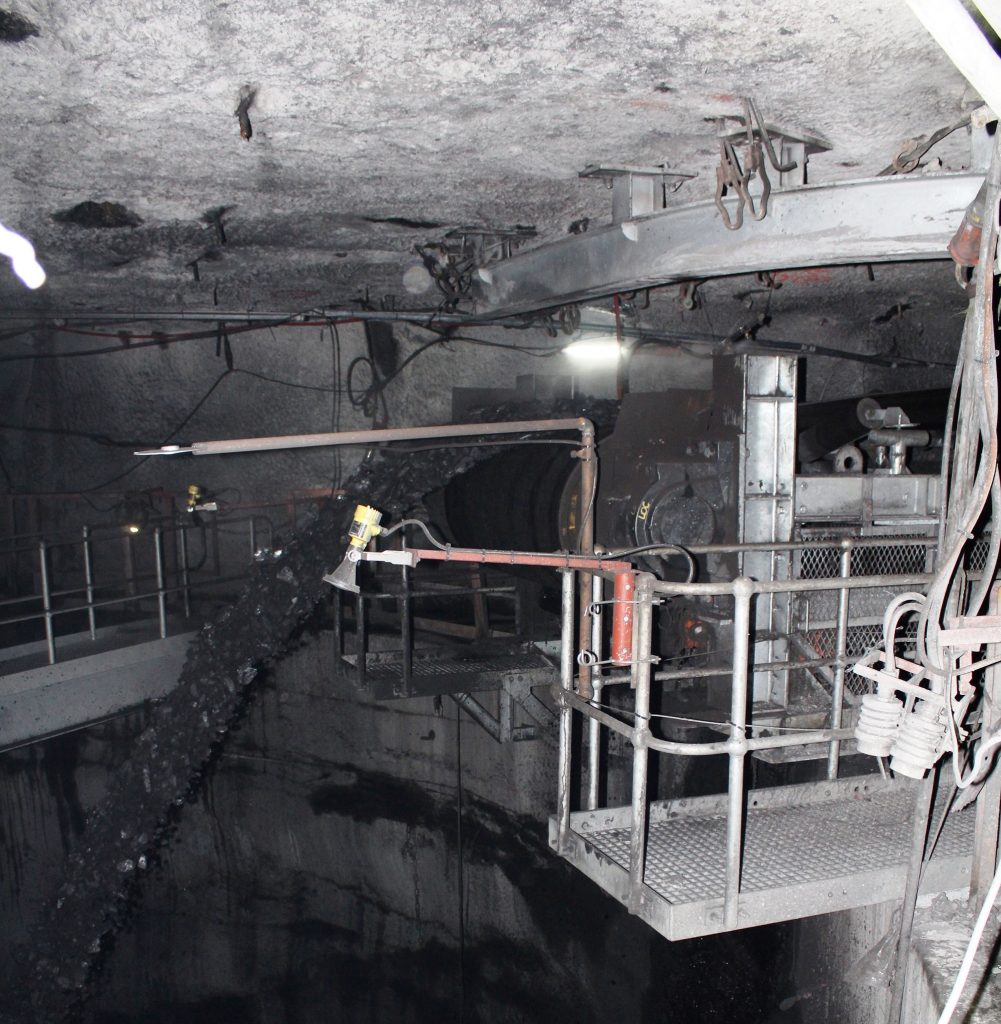Murray & Roberts Cementation has completed another milestone project for leading South African coal miner, Sasol Mining. It took Murray & Roberts Cementation one year to excavate, support and equip a 1,500 t underground bunker and box front with its associated infrastructure at Impumelelo mine. This included construction of a 1.8 m wide decline conveyor that has a running speed of 4.6 m/sec and a coal handling rate of 2,950 t/h.
Steering the team was Murray & Roberts Cementation’s Technical Director, Mike Wells, who has more than 23 years’ experience with the company in constructing underground infrastructure. Wells says this was a benchmark project for Murray & Roberts Cementation and certainly one of the many highlights in his long career building essential underground mine infrastructure.
“This is one of the biggest box fronts I have ever helped to construct. It is a 14.7 m diameter excavation and over 27 m high between the number 4 seam and the number 2 seam. In total some 5,800 m3 was excavated and supported with rockbolts, mesh, shotcrete and long anchors as part of the project,” he says.
The box front took up to six months to equip, with the ring beam and approach slabs comprising 200 m3 of reinforced concrete. The side walls in the chamber are 10 m high and 16 m long with a width of 1 m; containing 390 m3 of concrete and 60 tons of reinforcing bar. The eight spliced girder beams are 1.5 m high and 11.4 m long. The soffit floor comprises 200 m3 of concrete.
Reforming the conical section took 6,800 sandbags , 451 m3 of mass concrete and 126 m3 of 70 MPa Andesite shotcrete
Murray & Roberts Cementation deployed a host of specialised skills to successfully complete this project. These included the ability to undertake complex rigging projects and its extensive experience planning concurrent activities. An example of working in multiple areas simultaneously would be the construction of the conical section, installing the top of bunker steel, comprising four jib headframes and head pulleys, and constructing the bottom of the bunker box front with chutes and two levels of flooring.
However, it was also the company’s ability to tackle the complicated electrical and instrumentation requirements as an extra to the contract at the same time that gave the mine the necessary assistance to meet the tight scheduling .
“This ability helped us meet all the key milestones on the bunker excavation and box front equipping which were critical for the mine to meet its production build-up requirements. These included the extension of the conveyor belt and the ability to feed coal through the bunker,” Wells says.
The project was successfully completed without a single lost time injury, which is testament to Murray & Roberts Cementation’s stringent health and safety protocols on all its construction sites. A crew of 80 people was deployed in two shifts at the top and bottom of the structure, as well as the conical section of the bunker.
Wells attributes the sound safety and productivity levels achieved underground at Impumelelo mine to thorough upfront planning involving key members of the team, who had a unique understanding of the environment considering their four year long prior involvement in the shaft sinking component of the contract.
“The devil was definitely in the detail of the planning, while the plan had to be reviewed and adapted constantly in its execution. Progress meetings were held weekly and processes adapted and controlled wherever necessary to keep the project on track,” Wells says.
This level of planning was essential to ensure the timely delivery of concrete and reinforcing, as well as essential lead items such as fabricated steel and electrical componentry and instrumentation to the site.
Concrete was transferred through a 200 m long, 200 mm diameter cased aggregate hole on surface and pumped to where it was needed.
All the galvanised steel was laid out on surface and pre-assembled, before being disassembled and re-assembled in the correct sequence underground. During the course of the project, more than 100 tons of galvanised steel was loaded on site and pulled down the decline shaft with a load haul dumper.
The massive girders were lifted and placed using a system comprising four pneumatic chain blocks. The system also allowed the girders to be moved in a longitudinal direction and then swung 90 degrees and placed on top of the slab walls.
Another achievement on this site was Murray & Roberts Cementation’s close control over wastage. For example, tight control was exercised over the supply of bolts and therefore there was no shortage of these issued items.
Wells is proud of this project and he certainly has reason to be, considering the acclaim it has received from Sasol Mining.











